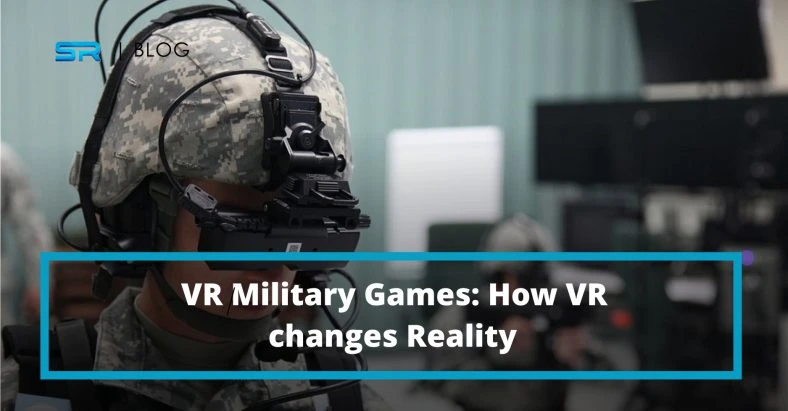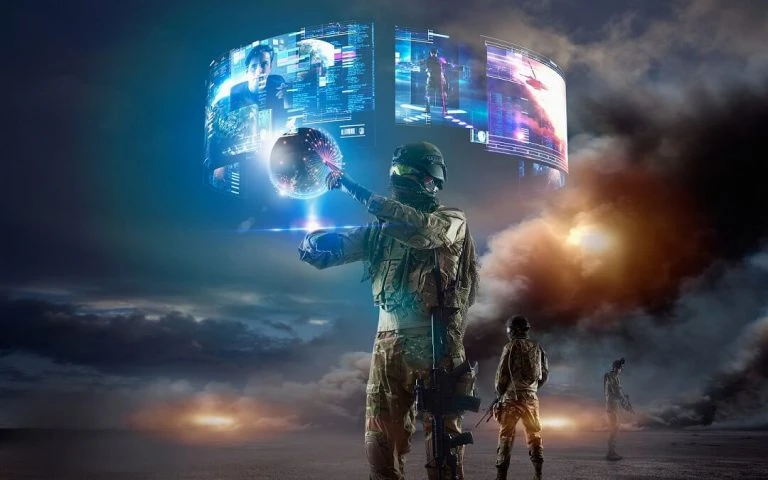VR Military Games: How VR Changes Reality

Modern techniques of training in the army have long since moved away from practice in real combat - the principle that the ancient Spartans were guided by. Instead, the army forces and the navy, as well as the airborne troops, actively use modern technologies, including augmented reality simulators.
For example, the US military uses video games closely to train soldiers since 2012. VR military simulator is now applied in many armies. The British Army has long adopted the simulators of various military equipment for training pilots, tank drivers, gunners. The decision to use for this purpose military training in virtual reality helps to solve several problems at once:
- When ordering military equipment, the army spends one-time money, because high-quality VR solutions do not become obsolete and do not break, just like military equipment itself - just update the software and train soldiers on a new model of a tank or helicopter.
- Equipment for military VR games allows you to use a variety of programs on the same device - and, accordingly, simulate emergency situations or combat options so that recruits after the full course on the simulator can safely proceed to the practical implementation of combat missions.
- Even the simplest equipment can serve well in virtual reality military training: for example, in the USA, an ordinary VR headset is used together with a simple fastening system for the sake of the special forces training to simulate parachute jumps in different weather conditions.
In addition, with the help of new technologies, you can create a VR virtual army environment that almost completely copies existing locations, and, by the way, the generation process is faster than ever. The basis of the system is artificial intelligence. It uses all visual sources available nowadays to recreate the desired virtual copy: map service data, satellite imagery, and other easily accessible information. Virtual military training is now an integral part of general training.

Such simulations will help soldiers better navigate the terrain, plan operations more quickly and more efficiently, and perform a more accurate calculation of each action over time, taking into account the particular location. Already, the US Army can boast a finished virtual version of North and South Korea, San Francisco, New York, and Las Vegas. Why these places? Unknown.
Up to this point, learning in virtual reality was carried out in places that could be described non-specifically. Just select the desired region on the map, and the AI will generate its virtual counterpart. The process takes only a few days.
What Variants of Military VR Games Does Exist Today?
Military train games are not new these days. Both virtual and augmented reality is used in VR train game. Let's take a look at military virtual reality training.
Use of virtual reality in military training
If we talk about the variety of options for the gaming industry, then it is fully disclosed in the military sphere. To carry out the VR military training and education of soldiers, the army orders software for cyberspace, which helps:
- To teach the management of various military equipment, including experimental samples, to which there is no access in the usual military unit;
- To train specialists in especially dangerous areas, for example, sappers, liquidators of nuclear explosions;
- Carry out training under field conditions for airborne troops, infantry, or marines;
- Go through quests and complete missions of different complexity;
- To enable soldiers to be in a combat situation and increase their stress resistance and response to the changing environment around them;
- Strategic games for the development of thinking, analysis of the current situation, and decision-making are the basis of many augmented reality military applications in the service of army units;
- To conduct military VR training for paramedics in a situation close to real, and to work out the necessary skills for first aid during combat operations.
Military training games are created to advance army skills. Besides, this is far from everything suitable for the military goals in VR development, because each area of military science and technology is constantly evolving, and with it, the market of VR applications for military needs is also developing.
Aerospace Industry and Its Needs for VR
In addition to the military units themselves, there is a great demand for virtual reality products in the aerospace industry. This is quite logical because it is expensive and difficult to work out the actions of the astronauts in outer space. But a suitable simulator will help to conduct regular training and develop the necessary skills for those who in the future will carry out flights into space. For example, Chinese astronauts are training for outer space conditions with the help of special VR spacesuits and water pools, getting through various challenges.
Pros and Cons of VR Military Simulator
| Pros | Cons |
| High efficiency and quick trainees progress | Possible cybersickness due to false signals to our brain |
| Cheaper training in comparison to other specialized facilities | Medium security level especially in the part of cyber-attacks protection |
| No risk and accidents elimination | Extra resources are needed for more complicated scenarios |
| Great range of simulations to approbate different scenarios |
Why Do the Military Need VR Technology?
With the help of augmented reality tools, the military can use such specifics of the virtual world:
- Virtual reality isolates a person from reality, fully focusing him on those objects that are in front of him in virtual space.
- With the help of virtual space, you can display the necessary terrain in all details (all maps are loaded from satellites and transmitted with maximum detail) and conduct virtual reality military exercises even before the time of real exercises comes.
- It reduces the number of errors in the exercises and real situations. If a sapper in life is mistaken once, then in virtual reality he is free to make mistakes until he learns. But it will be an explosion, the soldier will be shown the aggressiveness of the environment and the seriousness of the consequences. This is a good incentive to remember how to do it.
- Material absorption is improved because it is an immersive experience that you experience as a reality. Different senses are involved, not just hearing or seeing, as is the case with traditional tutorials or tests - you act in virtual reality just as you would in life, working on motor skills as well.
- Besides, with its help, you can do practically impossible things. For example, to conduct joint group exercises of military personnel stationed on different continents. They are combined into one virtual space, with the server's help, and people interact with each other.
At the moment, the US Army is making the most contribution to the VR training center development - it is this country that has set the trend for the usage of virtual reality technology throughout the world. Australia and the UK are not far behind. Other states are also developing in the field of VR for special forces introducing BP technologies, but there is little information about practical developments.
Take a look on VR army game to ensure realistic
The VR-Development of Military Games from ServReality Company
Our company has been developing applications and software for virtual reality for a few years. During this period, we have achieved considerable growth and have gained a lot of experience, which we are improving every day. Since the growth of VR military games began from ordinary computer games, we fully utilize all the possibilities of modern game development to present qualitative and fundamentally new products in the virtual reality market that will help the military industry to develop and become more accessible. An army can truly benefit from VR. Thanks to our military Virtual Reality training solutions for the military in the virtual space, you can train your military personnel by spending much less money than with the organization of regular exercises in the field. All the advantages of VR army games, you can ask our managers, will help you to get the maximum result in the training of military personnel in the shortest possible time. Virtual Reality in the military now is absolutely a perfect indispensable tool. Also, get to know how virtual reality is used in education.

